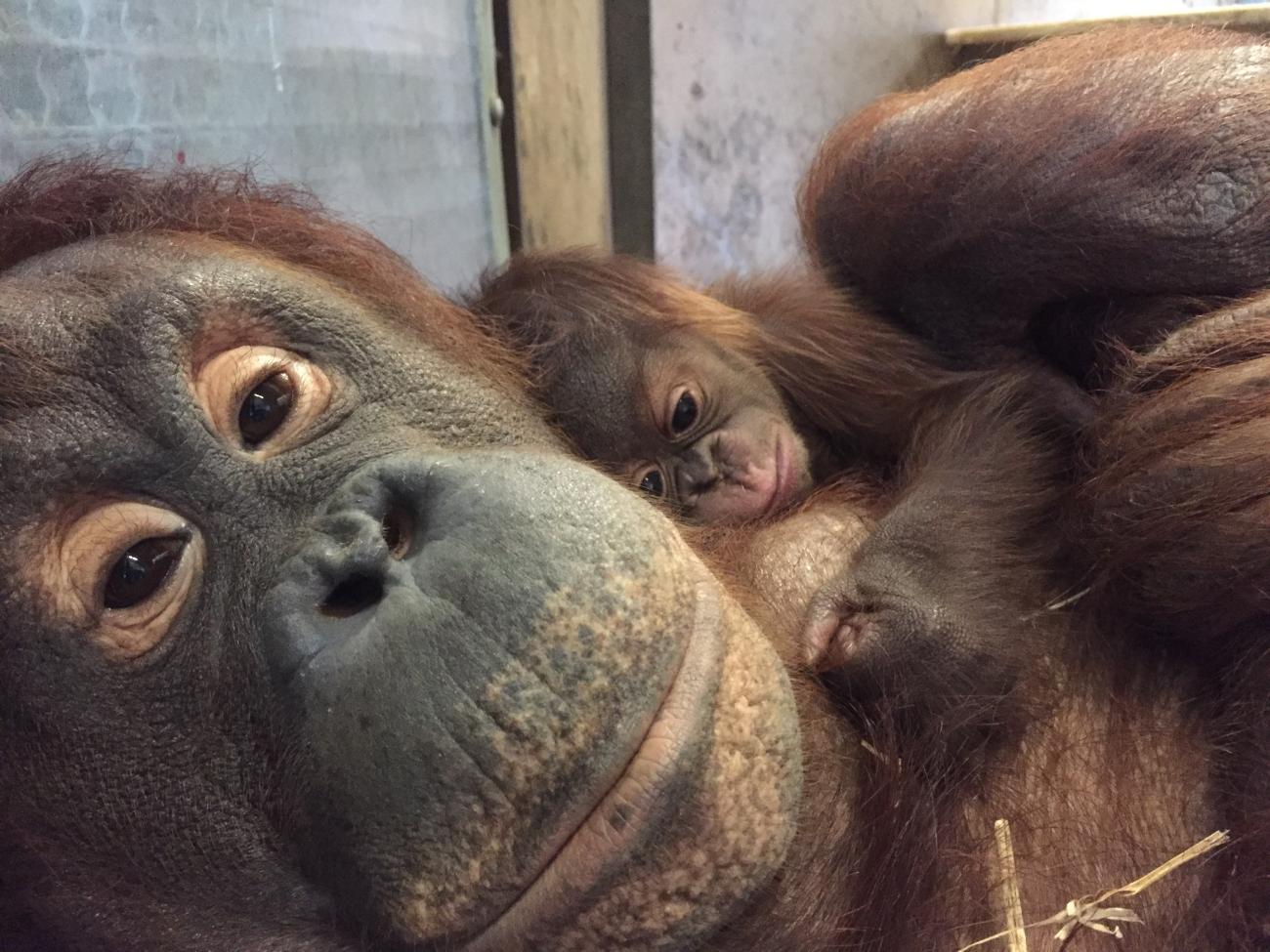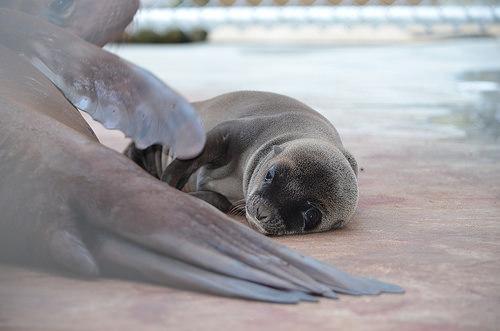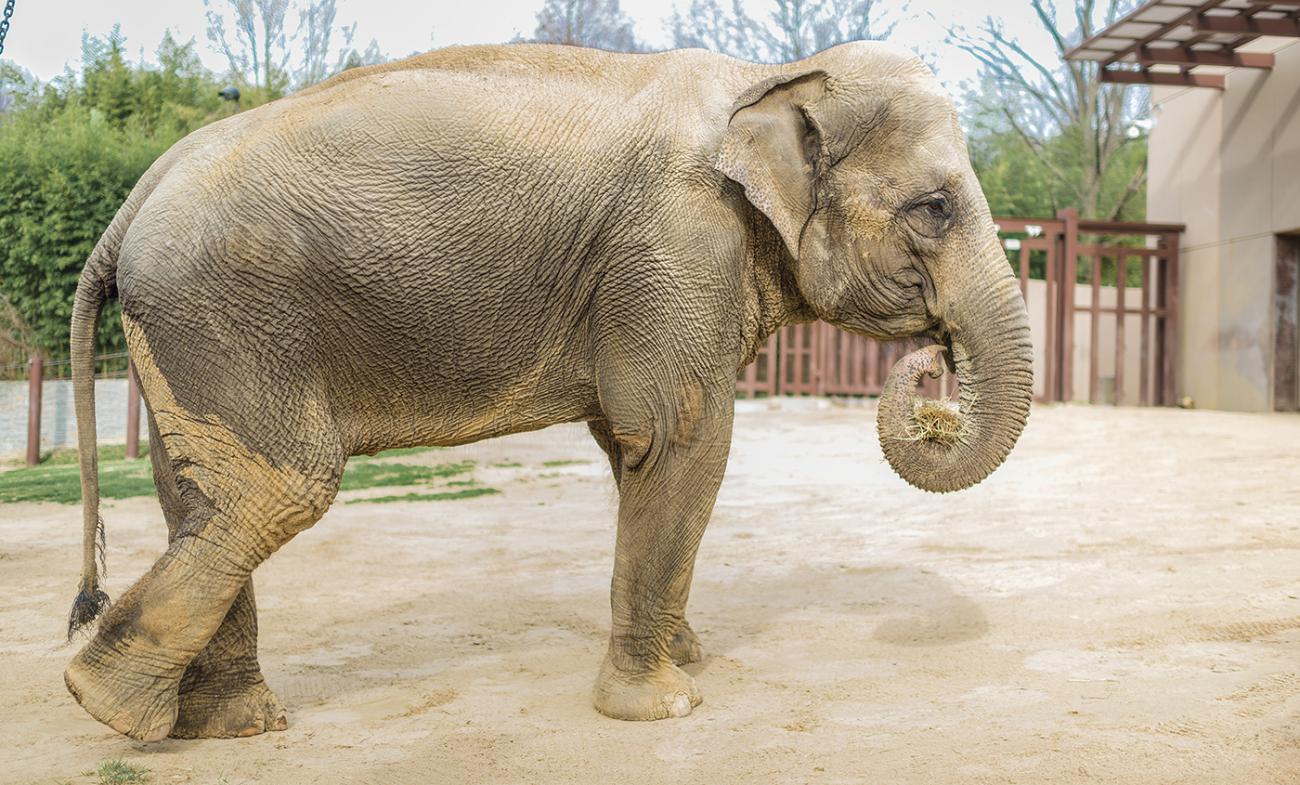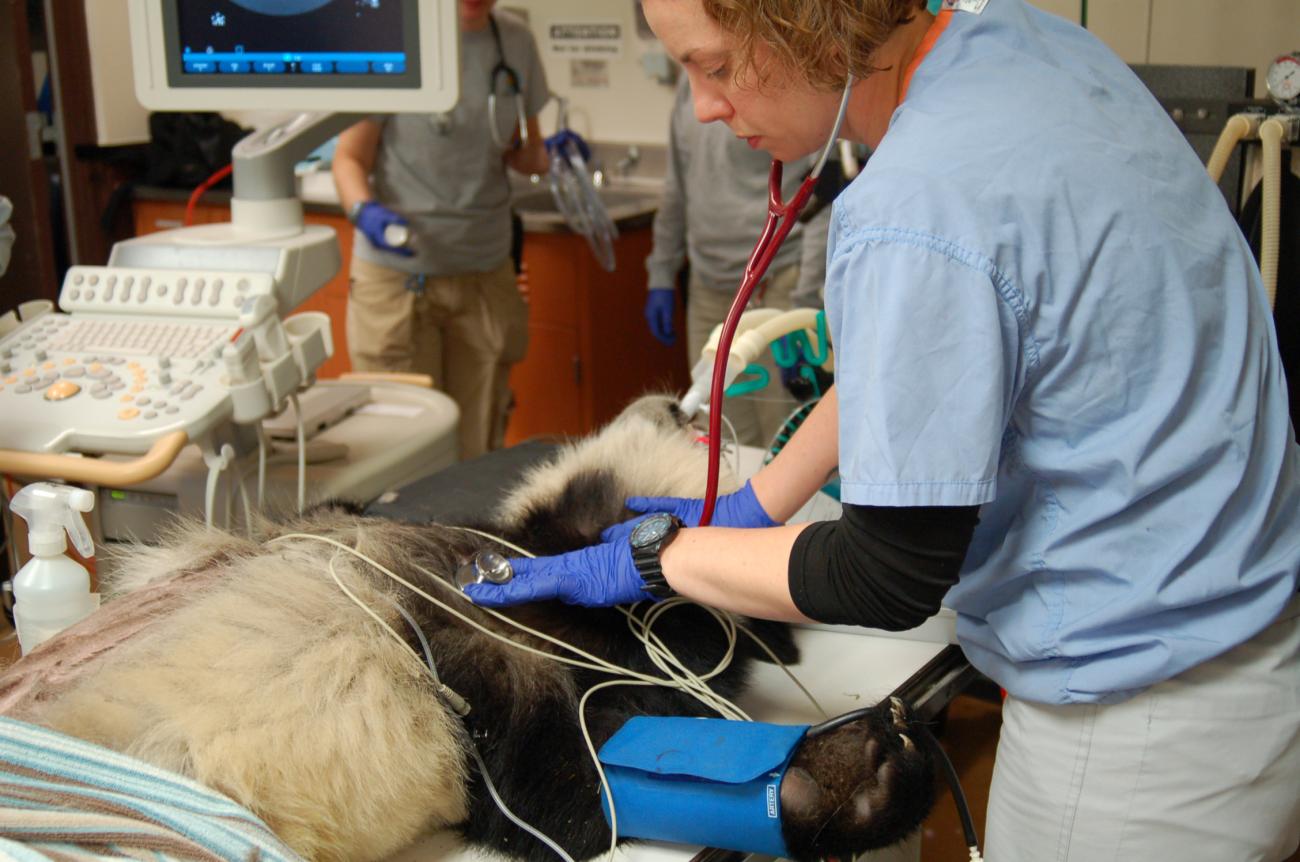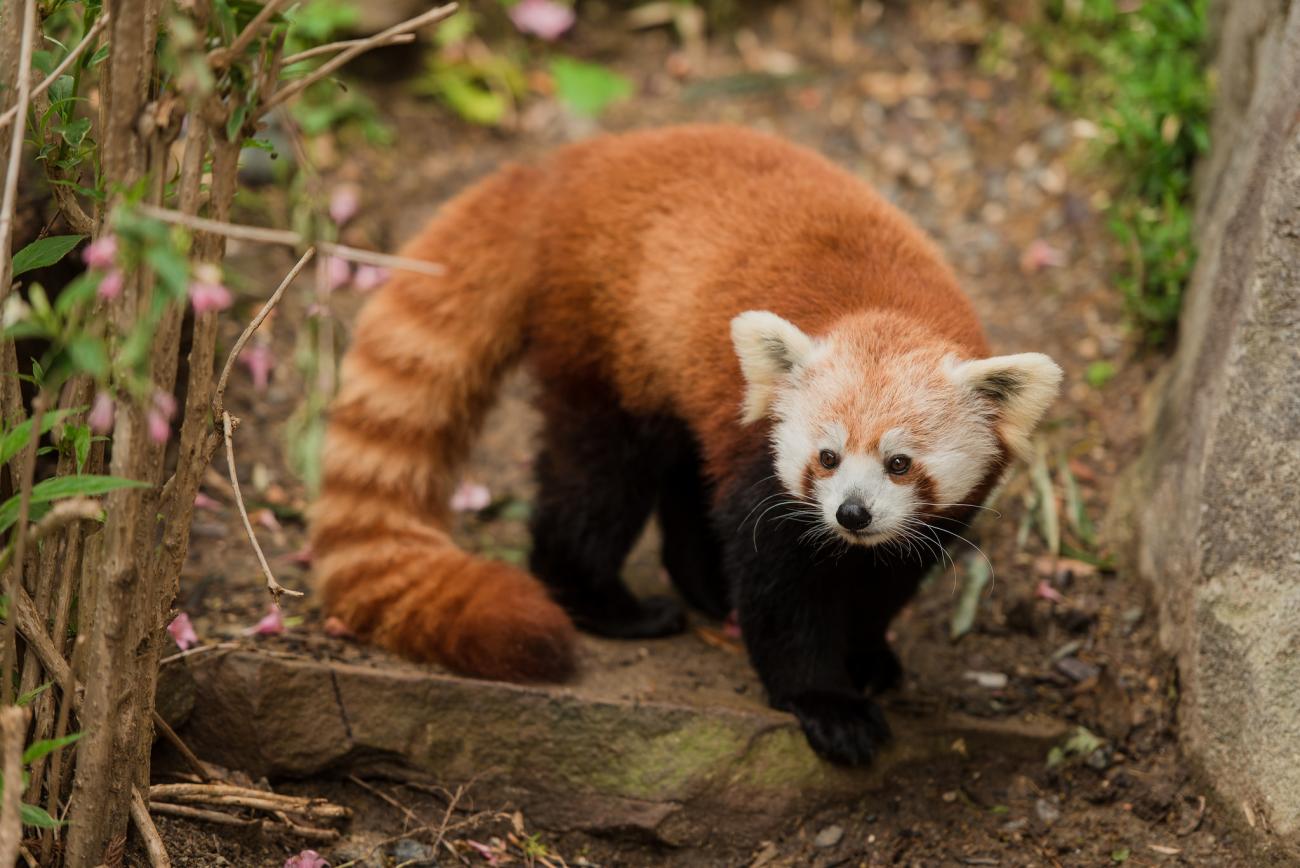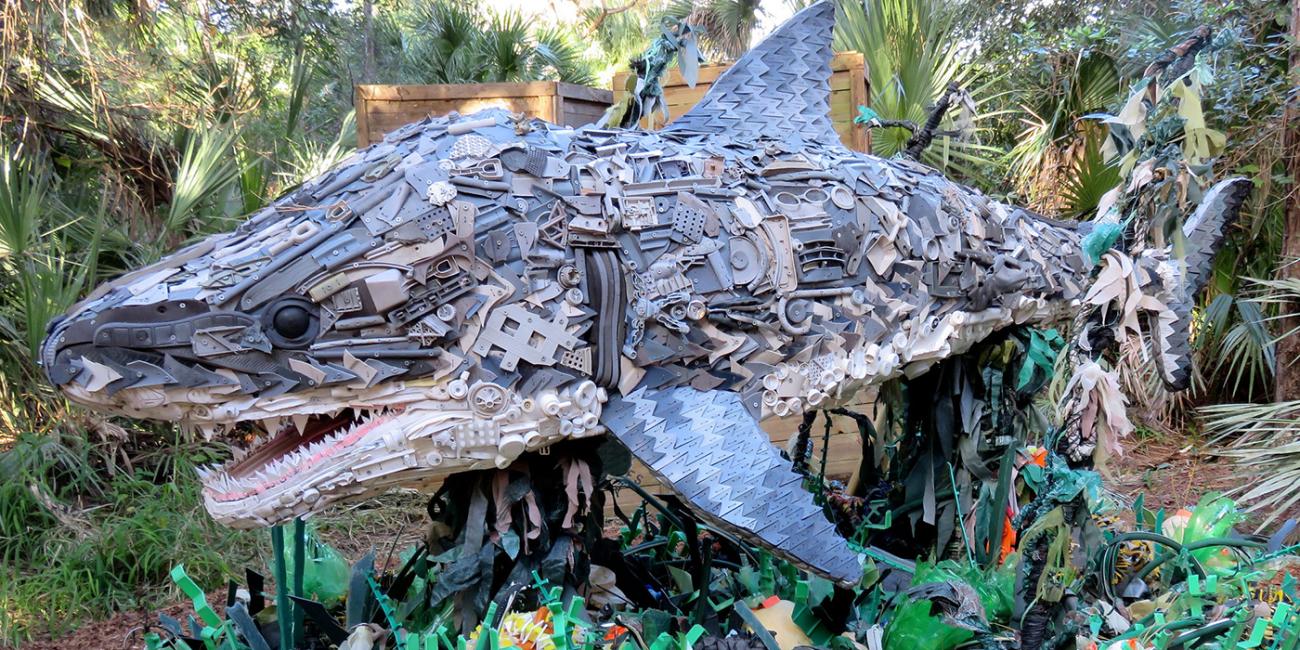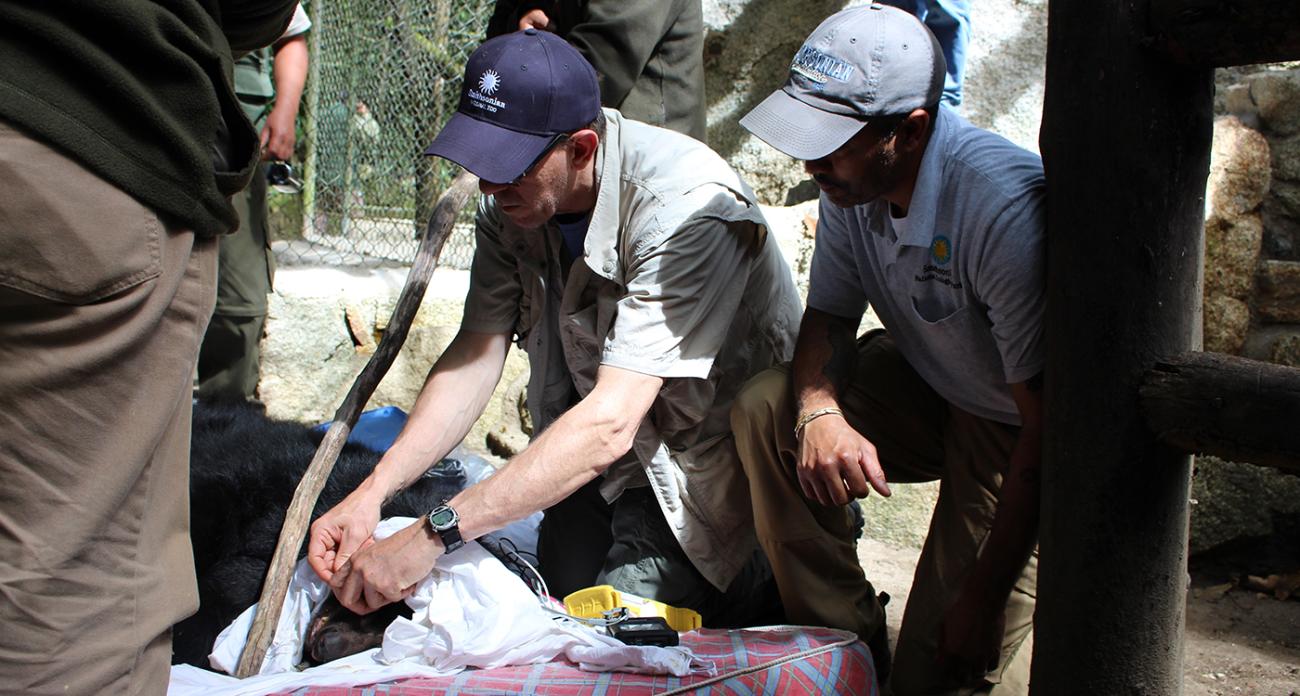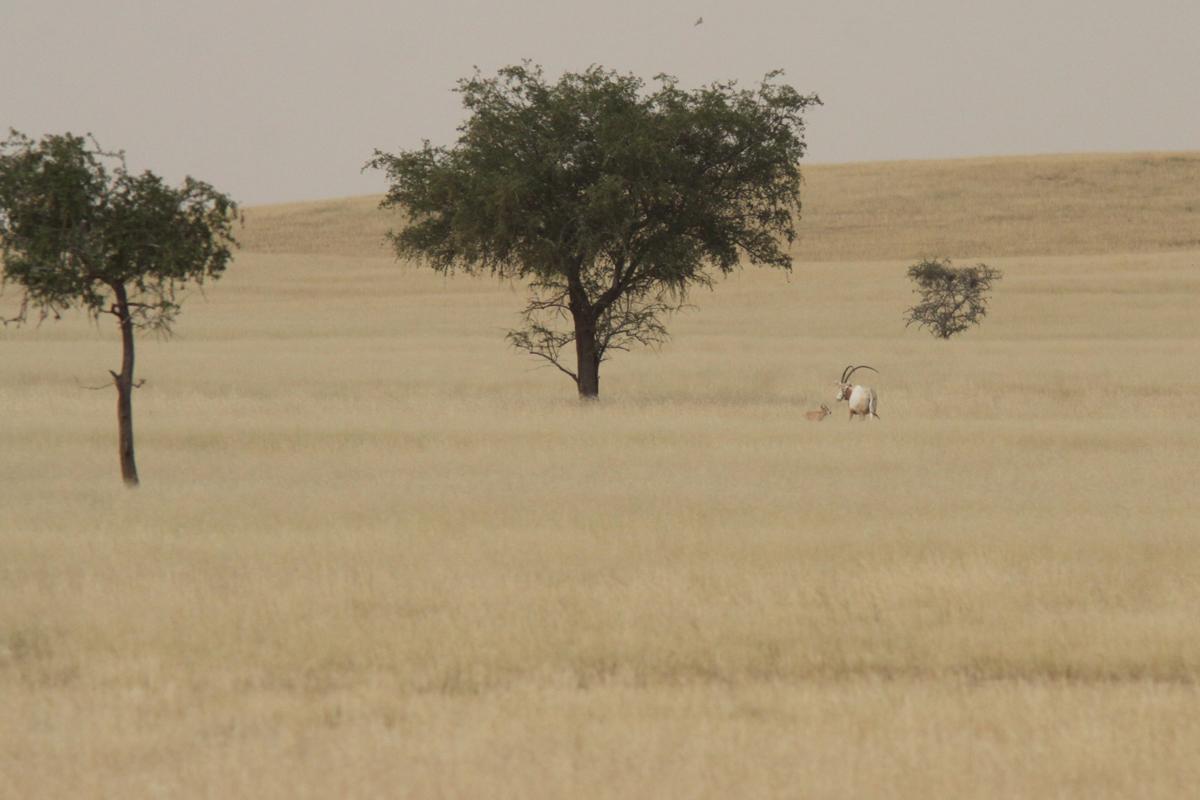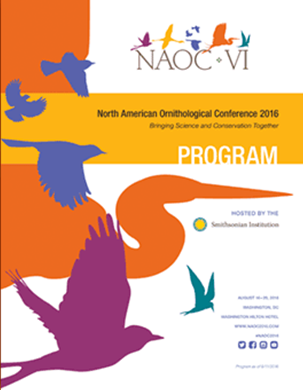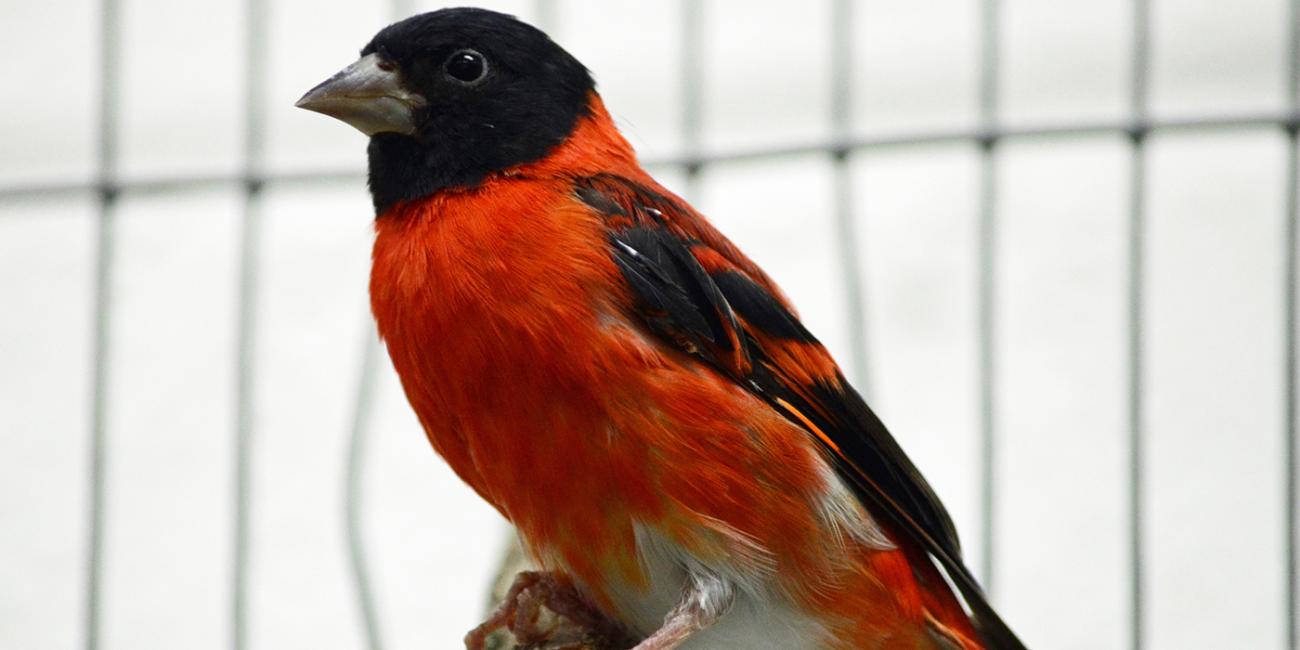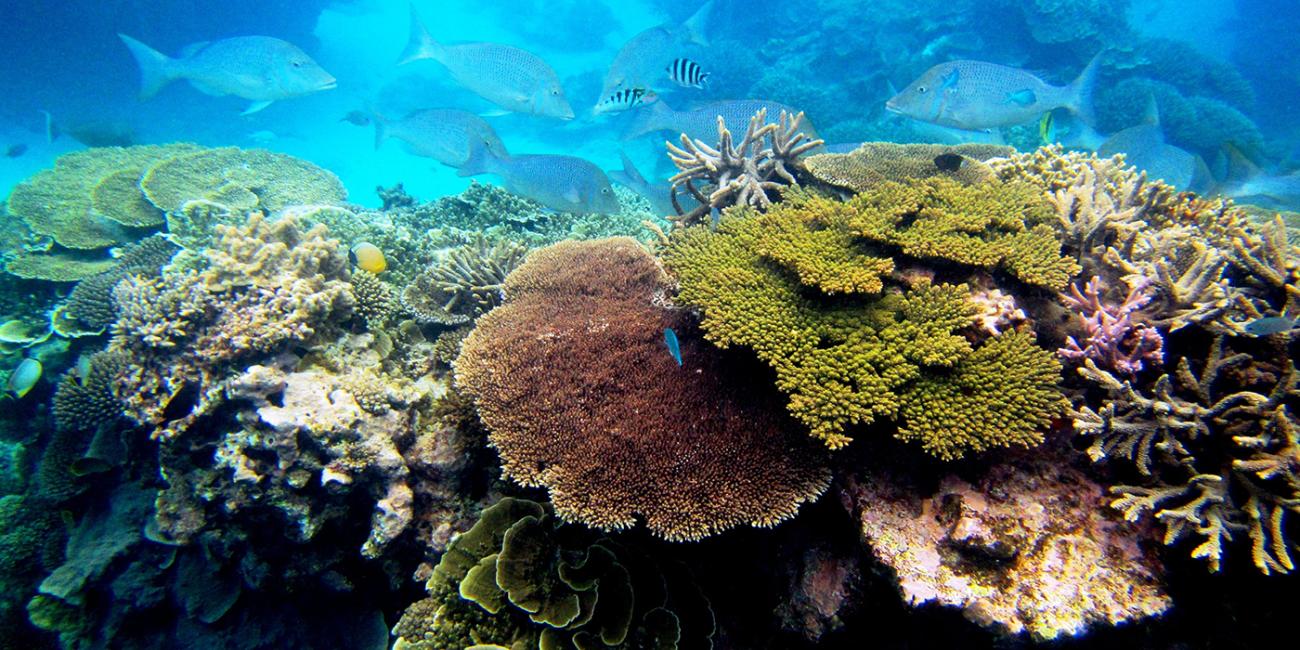2016 Donor Impact Report
At the Smithsonian's National Zoo and Conservation Biology Institute, we provide engaging experiences with animals and create and share knowledge to save wildlife and habitats. In 2016, we accomplished many things, including the continued breeding of endangered species, providing world class animal care and making new discoveries in conservation research and science — none of which would have been possible without your support. Together, we save species!
Celebrating Zoo Births
Bornean Orangutan
For the first time in 25 years, the Zoo’s great ape team celebrated the birth of a male Bornean orangutan born on Sept. 12, 2016. Batang (female) and Kyle (male), both 19 years old, bred in Jan. following a breeding recommendation from the Association of Zoos and Aquariums’ Species Survival Plan (SSP). The name Redd was selected for the male infant, because orangutans are known as the red ape.
"Each and every birth of a critically endangered species is significant, but this is a historic moment for our Smithsonian's National Zoo."
Bornean orangutan population levels have dropped more than 50 percent over the past 60 years, and their habitat has declined by over 80 percent in the past 20 years, putting them in imminent danger of extinction.
Red-ruffed Lemurs
The Small Mammal House team also celebrated the birth of three critically endangered red-ruffed lemurs, born April 5, 2016, to 6-year-old mother Molly. The SSP recommended that Molly breed with the Zoo's 7-year-old red-ruffed lemur brothers, Coronado and Cortez. These primates are listed as critically endangered due to deforestation, hunting and trapping.
California Sea Lion
The Zoo's American Trail team celebrated the first sea lion pup birth at the Zoo in 32 years. The female pup was born on June 26, 2016, to 11-year-old mother Calli. The pup, named Catalina, is the second for Calli and the first for 8-year-old father, Jetty. Calli, Jetty and Catalina are thriving and can be seen on exhibit on the American Trail.
Elephant Care: In Situ and Ex Situ
More than a decade ago, the Zoo’s 41-year-old Asian elephant, Shanthi, was diagnosed with arthritis in her front wrists. Recently, the arthritic pain has led Shanthi to bear weight on her front feet abnormally, ultimately causing lesions on several toenails and the surrounding tissues. To address this situation, animal care staff administered daily pedicures, medicated foot baths and cold laser therapy for several months. They are now trying two new methods of protecting her nails and feet: an innovative osteoarthritis therapy and boots, crafted and donated by Teva, to Shanthi’s specifications. Since implementing these treatments and use of the boot, Shanthi has shown improvement in her joint mobility and is consistently bearing weight on all of her feet.
Building on what we have learned about elephant welfare, the Smithsonian's National Zoo and Conservation Biology Institute have undertaken a study in Thailand to assess the stress and nutrition of more than 100 elephants from over 15 tourist camps. The hormone and nutritional data compiled with the caretaker and camp conditions data will provide insight into the health and well-being of the elephants. Using this information, Janine Brown, research physiologist and head of the SCBI Endocrinology Laboratory, is working with the Thai government to develop guidelines to improve conditions in the camps.
Giant Panda Cub: A Life-saving Surgery and Recovery
"I'm extremely proud and thankful for our team of keepers, veterinarians, animal care staff, volunteer medical experts and all staff who have helped facilitate the urgent response."
On Nov. 24, the Zoo's male giant panda cub, Bei Bei, showed signs of stomach discomfort and nausea. An ultrasound of his stomach and bowels revealed a blockage at the top of the small intestine which required surgical removal. Acting quickly, the Zoo’s Animal Care staff worked with a volunteer board-certified veterinary surgeon from Lazar Veterinary Surgery to perform life-saving surgery to remove a mass of bamboo. Bei Bei is recovering well in the David M. Rubenstein Family Giant Panda House.
Red Panda Retreat
Donor support enabled the red panda habitat on Asia Trail to reopen to the public on May 10, 2016. Tusa (male) and Asa (female) love their new home, which includes four new indoor enclosures. The enclosures include a viewing window, air conditioning and ample climbing structures for the arboreal animals to enjoy. As their population declines in the wild, growing and maintaining self-sustaining populations of red pandas in zoos and breeding facilities, like those at SCBI, is a high priority as a hedge against extinction and to learn more about species biology.
Washed Ashore: Art to Save the Sea
On exhibit for the first time in the Washington, D.C., region, the Smithsonian's National Zoo partnered with Friends of the National Zoo to present "Washed Ashore: Art to Save the Sea" from May 27 through Sept. 5, 2016. Made completely of plastic debris collected from beaches, the colorful and dramatic sculptures of marine animals represent the more than 315 billion pounds of plastic in oceans today and underscore the need for wildlife conservation.
The exhibit engaged more than 75,000 visitors with the help of volunteer interpreters. After experiencing the exhibit and talking to a volunteer, 93 percent of visitors at the Zoo's World Oceans Day event said that they would take action to reduce marine debris.
Croc Studies: Social Behavior, Reproduction and Play
Keepers at the Reptile Discovery Center launched ground-breaking research on social behavior, reproduction and play in a species not typically associated with any of those words: the crocodile. RDC keeper Lauren Augustine’s research began as a way to track the reproductive cycles of the Zoo’s three female Cuban crocodiles but has since expanded to include social interactions, dominance behavior and even play behavior.
Zoo to Peru: Andean Bear Adventure
Animal care staff traveled to Machu Picchu, Peru, to collaborate with colleagues from the Inkaterra Association and the Peruvian government to learn about their Andean bear program and help develop a strategy to enhance conservation, education and management of the captive and wild populations of Andean bears in the Machu Picchu Sanctuary. Back at home, Zoo staff have been refining the Andean bear program for many years and will use this experience to make a significant difference in turning what they've learned into something that helps these amazing animals in their homeland.
“Animal management is a crucial component when it comes to answering the question, 'How do we save species?' Ensuring the overall health and well-being of animals in human care includes access to veterinary care, proper nutrition and meeting husbandry needs such as enrichment, socialization and breeding.”
The Next Generation: Oryx Thrive in Chad
Reintroductions of the scimitar-horned oryx led by Environment Agency – Abu Dhabi and the Government of Chad began last year. On-the-ground implementation of the project is carried out by the Sahara Conservation Fund, and Smithsonian Conservation Biology Institute ecologists are collecting behavioral data on the reintroduced oryx from satellite collars. This past spring, 23 scimitar-horned oryx were released into the Sahelian grasslands — returning them to their native habitat decades after they were declared extinct in the wild. These animals, each fitted with a satellite tracking collar, send us text messages every day letting us know where they are. The data is being used to better understand their behavior and helps our field team in Chad track, monitor and protect the herd. We have been astonished by how much we have learned already and, to our delight, the first calf in nearly 30 years was recently born in the wild. Fifty more oryx will join this pioneering group in 2017, with an ultimate goal of releasing 500 animals over the next five years.
Conserving Landscapes and Wildlife in Kenya
In 2009, Kenya adopted its first National Land Use policy in an effort to establish best practices for land management, prioritizing sustainability and conservation, and more recently, land tenure rights for indigenous peoples. We are partnering with community-led wildlife conservancies, land trusts and other stakeholders across Kenya to conduct research and share knowledge about landscape change, species movement and corridors, wildlife disease, genetics and hotspots for human-animal conflict. There is great urgency to implement long-term sustainable practices to protect the region’s unique ecosystems and biodiversity, which are vital to ensuring the health, prosperity and security of all Kenyans. We are also undertaking exciting new research aimed at helping to understand and conserve flagship species, such as the lion, cheetah, elephant and giraffe.
“This past year has reminded me why I wake up every day and come to work — we are making a difference. We are changing the world. However, we cannot do it alone. It takes partnerships and support from people like you.”
The Grand Phenomenon of Avian Migration
One-third of North American migratory birds are at risk of extinction without significant conservation action. Large-scale challenges like climate change and habitat destruction are having devastating effects on our migratory bird populations. The Smithsonian Migratory Bird Center — dedicated to understanding and conserving the phenomenon of bird migration — recently hosted the largest-ever avian specialist conference, convening more than 2,000 scientists, students and stakeholders at the North American Ornithological Conference.
Our Migratory Connectivity Project (MCP) seeks to better understand migratory birds throughout the year and to promote the study of full, annual-cycle biology. In 2016, MCP was able to outfit 10 bird species, including the black-bellied plover, black-crowned night heron, Canada warbler and common nighthawk, totaling 122 individuals with tracking devices in Alaska, Georgia, Washington, D.C., Texas, Alberta and Saskatchewan, Canada. MCP was also able to band 81 species of birds totaling 2,193 individuals at Clive Runnell’s Mad Island Marsh Preserve, Texas.
In partnership with the USGS Alaska Science Center, MCP is tracking Pacific Loons from two breeding populations in Alaska. By simultaneously tagging individuals from the two separate breeding populations — one above the Arctic circle and one in western Alaska — they were able to witness a stunning migratory divide in action. The Arctic is rapidly changing, and the information we uncovered is critical for determining how changes might affect the two populations differently.
Saving the Red Siskin
SCBI scientists are working with colleagues from the Smithsonian National Museum of Natural History to study, breed and reintroduce to the wild a small, critically endangered bird species, the red siskin. The red siskin was thought to be extinct in Venezuela due to loss of habitat and illegal capture of the animal for the pet trade. After the remarkable discovery of a small population of red siskins in neighboring Guyana, our energetic team of experts mobilized to secure a future for this beautiful bird. A captive breeding program in Front Royal, Virginia, was initiated to develop breeding and animal care protocols that will form the basis of sister programs to establish source populations in Venezuela that will ultimately be released back into their native range. To address the problem of habitat loss, our scientists are also actively reaching out to and working with coffee and cocoa farmers to establish bird friendly practices.
“Birds are truly a shared resource. With so many species showing alarming population declines, we must take steps to conserve birds and their shrinking habitats. Opening a major exhibition dedicated to the phenomenon of migration coupled with the scientific advances in the study of wild birds by our Migratory Bird Center and the Zoo’s migratory bird husbandry expertise will help raise awareness and tackle these issues head on.”
Coral in Crisis
2016 has been a devastating year for the world’s coral reefs. Rising ocean temperatures and a strong El Niño season combined to induce coral bleaching in reefs around the globe. Bleaching events lower coral growth rates, decrease reproductive capacity, increase susceptibility to disease and, if sustained over time, result in high mortality rates. Scientists recently confirmed that 67 percent of the corals in Australia’s Northern Great Barrier Reef died this year in the midst of the largest coral bleaching event ever observed.
Though these statistics are truly shocking, SCBI’s Mary Hagedorn and the Reef Recovery Initiative have not been sitting idly by while corals are threatened. To date, the team has preserved the genetic diversity of 16 species of coral by collecting and cryopreserving sperm from hundreds of individual corals. Someday, this genetic material could be used to grow new corals to repopulate reefs around the world. Hagedorn and her colleagues also successfully cryopreserved the first zebrafish embryo, using a technique called ultra-rapid laser warming. This is a major advancement in the field of cryopreservation, as scientists have been trying for more than 70 years to freeze the eggs and embryos of organisms with large yolks, such as fish, birds, reptiles and amphibians, but have been unsuccessful. Hagedorn’s team is now adapting this same technology to cryopreserve coral eggs and larvae.
The Global Earth Optimism Summit
Decades of study have documented the fast pace of habitat loss, the growing number of endangered and extinct species, and the increasing rate of global climate change. However, now we must begin to engage in meaningful conversations about successful solutions for a healthy planet. This has led to the creation of the Smithsonian Conservation Commons, under the leadership of Dr. Steve Monfort, which seeks to demonstrate how the whole of our institutional efforts in conserving biodiversity is greater than the sum of our parts. Over Earth Day weekend (April 21 to 23, 2017), we will convene thought leaders, practitioners, pioneering scientists and researchers, major civic and industry participants and philanthropists who make up the conservation-minded citizens of our world at the Earth Optimism Summit. The Summit will share what is working in conservation and how successes can be scaled up and replicated.

